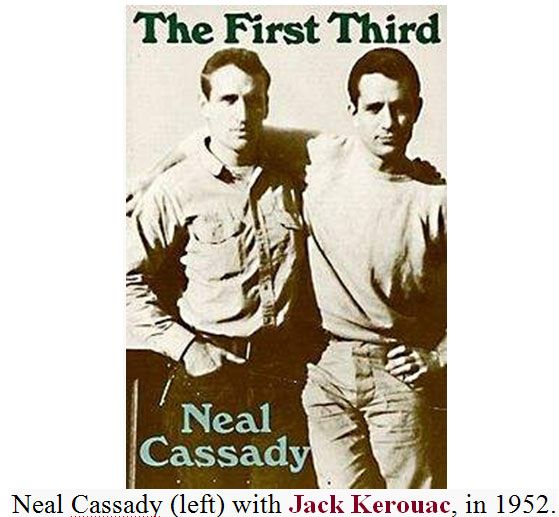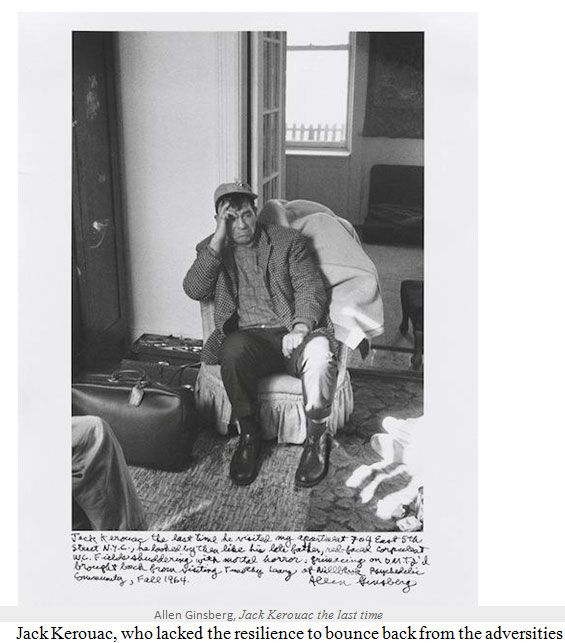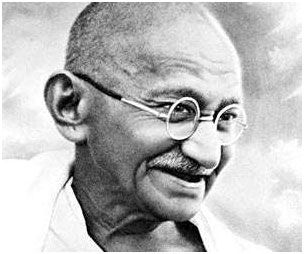Publication
Article
Psychiatric Times
Journey of the Traumatized Hero: Kerouac’s On the Road and Gandhi’s Railroad Ride
Author(s):
The art of living is the ability to use life’s inevitable traumas in some constructive fashion. This occurs on an odyssey that the resilient take that could be termed “the Journey of the Traumatized Hero.”
The art of living is the ability to use life’s inevitable traumas in some constructive fashion. This occurs on an odyssey that the resilient take that could be termed “the Journey of the Traumatized Hero.”
This is based on comparative mythologist Joseph Campbell’s Journey of the Hero. In this essay I compare the journeys taken by Jack Kerouac described in On the Road to the one of Mohandas K. Gandhi’s, related in My Autobiography: The Story of My Experiments with Truth. They are vastly different but in one important respect remarkable similar. It marked a turning point in their lives.
[[{"type":"media","view_mode":"media_crop","fid":"13874","attributes":{"alt":"","class":"media-image media-image-right","id":"media_crop_388148349010","media_crop_h":"0","media_crop_image_style":"-1","media_crop_instance":"631","media_crop_rotate":"0","media_crop_scale_h":"241","media_crop_scale_w":"250","media_crop_w":"0","media_crop_x":"0","media_crop_y":"0","style":"float: right;","title":" ","typeof":"foaf:Image"}}]]Following it, Kerouac drank himself to death whereas Gandhi formulated two important concepts by which he lived the rest of his life. The turning point for both occurred at the “Abyss” in a schematic representation of the journey Campbell described. Both died, in a figurative sense. Kerouac, unlike Gandhi, was never reborn. The successful completion of the journey of the traumatized hero requires resilience. Their traumas, resilience and journeys are described in this essay.

Gandhi’s Traumatic Railroad Ride and the Concepts of Satyagraha and Ahimsa
After completing law school in London at the age 23-years, Mohandas K. Gandhi ( ) left India once again to go to South Africa where legal work awaited
him. About a week after arriving, he was asked to travel from Natal to the capital of the Dutch-governed Transvaal province of South Africa for his case.
Gandhi purchased a first-class ticket but was told that he couldn’t sit in the compartment because he was a “coolie” (derogatory term for a non-white person) and would have to sit with third-class passengers. When he refused to move, a policeman threw him and his baggage off the train.
“It was winter,” Gandhi wrote, and “the cold was extremely bitter. My over-coat was in my luggage, but I did not dare to ask for it lest I should be insulted again, so I sat and shivered.” Sitting in the cold of the railroad station after being thrown off the train, Gandhi contemplated whether to return home to India or stay in South Africa and fight racial discrimination.
I was afraid for my very life. I entered the dark waiting-room. There was a white man in the room. I was afraid of him. ‘What was my duty?’ I asked of myself. ‘Should I go back to India or should I go forward, with God as my helper, and whatever was in store for me?’ I decided to stay and suffer. My active non-violence began with that date.
Gandhi’s decision was like that of David deciding to confront Goliath, in this case racial discrimination. It launched his campaign for improved legal status for Indians in South Africa who, at that time, suffered the same discrimination as black people in the United States. He used the trauma of the railroad coach for self-transformation, providing himself with a raison d’tre-the fight against injustice.
He spent the next twenty years working to improve the rights of Indians in South Africa. The train journey from Durban to Pretoria that he took is the prototypical journey of the traumatized hero.
Ahimsa and Satyagraha
In the mountains where he was thrown off the train, he decided that he would not express violence of any kind, and the concept of Ahimsa (Sanskrit a, “without” + himsa “injury”) (Non violence) came to him. It means to maintain not to hurt any sentient being, even minimally, through thought, word or act and is based on the premise that all sentient beings are interconnectedness s and that violence entails karmic consequences.
He also evolved the concept of satyagraha (“insistence on truth” from satya, “truth” + agraha, “grasp”). This involves refusing to submit to or cooperate with anything perceived as wrong, while adhering to the principle of nonviolence in order to maintain mindful equanimity required for insight and understanding.
This was Gandhi’s boon:
I have learned through bitter experience the one supreme lesson: to conserve my anger and as heat conserved is transmitted into energy, even so our anger controlled is transmitted into power.
Jack Kerouac’s On the Road
On the Road, a semi-autobiographical novel that Jack Kerouac wrote about its 2 protagonists Salvatore (“Sal”) Paradise (the alter ego of the author) and his friend Dean Moriarty (in real life Neal Cassady), a free-spirited maverick eager for adventure. Sal much admires Dean’s carefree attitude and sense of adventure and he is initially Sal’s ego ideal as they explore sex, drugs and jazz during the years from 1947 to 1950.

It describes a fierce quest for meaning and belonging, above all for a boon in life. Not content with the uniformity promoted by government and consumer culture, the Beats (Kerouac invented the term which he said stood for “beatific” or blissful, but not “beaten down”) yearned for a deeper, more sensational experience and an answer to the question “how are we to live?”
Kerouac wrote:
Dean and I were embarked on a journey through post-Whitman America to FIND that America and to FIND the inherent goodness in American man. It was really a story about 2 Catholic buddies roaming the country in search of God. And we found him. (Letter to a student, 1961)
It would seem that Sal (Kerouac) was in the midst of an identity crisis:
I woke up as the sun was reddening; and that was the one distinct time in my life, the strangest moment of all, when I didn’t know who I was - I was far away from home, haunted and tired with travel, in a cheap hotel room I’d never seen, hearing the hiss of steam outside, and the creak of the old wood of the hotel, and footsteps upstairs, and all the sad sounds, and I looked at the cracked high ceiling and really didn’t know who I was for about fifteen strange seconds. I wasn’t scared; I was just somebody else, some stranger, and my whole life was a haunted life, the life of a ghost.
Sal (Kerouac) considered that the solution to the identity confusion was found in a person like Dean Moriarty:
the only people for me are the mad ones, the ones who are mad to live, mad to talk, mad to be saved, desirous of everything at the same time, the ones who never yawn or say a commonplace thing, but burn, burn, burn like fabulous yellow roman candles exploding like spiders across the stars.
Sal believed that “The best teacher is experience and not through someone’s distorted point of view.” In the course of experience he discovered his boon, that he was a writer and that the life he had lived with the Dean, the fabulous “Roman Candle,” despite appearances to the contrary, was incompatible with the writer’s life. Finally he became aware that Dean’s selfishness extended even to him as he abandoned Sal, feverish and ill, in Mexico City. This is the moment where their paths diverge and Sal realizes that he has more to live for than just constantly moving, being on the road.
By the end of the book, Sal senses that except for words on a typewritten scroll, his life on the road is gone and his charismatic friend is a charismatic sociopathic car thief- nobody’s friend-is also gone. That is a great boon, because that was friend who had stung him earlier when “suddenly a bug flew into his arm and embedded a stinger in it that made him howl.” (268)
When the sun sinks, Sal sits on the old broken-down river pier watching the long, long skies over New Jersey, and reflects:
just before the coming of complete night that blesses the earth, darkens all the rivers, cups the peaks and folds the final shore in, and nobody, nobody knows what’s going to happen to anybody besides the forlorn rags of growing old, I think of Dean Moriarty, I even think of Old Dean Moriarty the father we never found, I think of Dean Moriarty.
Gandhi, who was being physically intimate with his wife when a servant knocked on the door to tell him that his father was dead, subsequently developed the concept of brahmacharya (the term denotes the endeavor to live a moral life to end suffering and reach enlightenment. Practitioners do not kill any living being, do not steal, avoid improper sexual relations, don’t lie, and avoid intoxicants. In this way, he dealt with the guilt surrounding father’s death by transforming it. For Sal, wearing “the forlorn rags of growing old,” only a vacuum existed where the father was once. Perhaps that is because when Kerouac was four, he was profoundly affected by the death of his nine-year-old brother, Grard, from rheumatic fever. At that time his father wallowed in drinking, gambling and smoking.
Jack Kerouac, who lacked the resilience to bounce back from the adversities of his life, died at the age of 47 from hepatic cirrhosis developed in the course of a lifetime of heavy drinking. The cirrhosis led, in turn, to esophageal varices. When these rupture he hemorrhaged bled to death.
Following the jazz/blues tradition, Kerouac’s poetry features repetition and overall themes of trouble and the sense of loss in life:
The story of man
Makes me sick
Inside, outside,
I don’t know why
Something so conditional
And all talk
Should hurt me so.
I am hurt
I am scared
I want to live
I want to die
I don’t know
Where to turn
In the Void
And when
To cut
Out.
[“Bowery Blues”]

Mohandas K. Gandhi, more resilient, returned from his journeys with the power to bestow his boon on fellow human beings. He died from the bullet of an assassin whom he blessed with his last breath.
Here is one of Gandhi’s poems:
Views on Truth
There is an indefinable mysterious Power that pervades everything.
I feel It, though I do not see It.
It is this unseen Power which makes Itself felt and yet defies all proof,
because It is so unlike all that I perceive through my senses.
It transcends the senses . . .
. . . I can see that in the midst of death life persists, in the midst of untruth, truth persists, in the midst of darkness light persists.
[Young India, October 11, 1928]
Nietzsche, David and Goliath, “Learned Helplessness,” and Emily Dickinson
Nietzsche was a bit glib writing “That which does not destroy us makes us stronger.” Kerouac, of course, was not literally destroyed when febrile in Mexico, and his “friend” Neal Cassady abandoned him. He was, however, emotionally devastated, having chosen a charismatic sociopath to replace the father who was missing in his life.
Why was Kerouac less resilient than Gandhi? Both had a goal: Kerouac sought to fill the space of the father missing from four years of age who was lost to him in alcohol and gambling, following the death of his older brother. Utterly shocked by racial discrimination which he had never before encountered, Gandhi sought to end that evil.
Although Kerouac taught himself to be a good writer, it is clear he lacked Gandhi’s fortitude-did not locate within himself the source of control for the problem he faced, and did not understand, as Gandhi did, that the obstacle is the path a and the greater the obstacle, the greater the opportunity for growth.
Malcolm Gladwell, although superficial at times, latches onto a basic factor in resilient people, analyzing the victory of the boy, David, over the giant, Goliath. In the Biblical story, David initially puts on a coat of mail, a brass helmet, and girds himself with a sword, preparing to battle with the conventional weapons of the time. Then he ponders, ”I cannot walk in these, for I am unused to it.” He remembers his skill is with a slingshot, not a sword. He picks up five smooth stones and-bammo! Slays the hulking bruiser.
“Davids win all the time,” Gladwell states, ”when they acknowledge their weakness and choose not to play by someone else’s rules.” Gandhi chose not to play by Great Britain’s rules that ”Might makes right,” altered the rules replacing “physical might” with ”soul power,” and became unbeatable.
But why, one may ask, did Gandhi have the resilience that Kerouac lacked? This may connect with the father which neither had. Kerouac’s was lost in booze and gambling and Gandhi’s, who died while his son was having sexual relations. Kerouac was four years old when his brother died of rheumatic fever and the father became dissolute.
Gandhi, on the other hand, was a young man when he lost his father and felt great guilt which he transformed into the practice brahmacharya (Skt brahmacharya, fr. brahman prayer + carya conduct, fr.carati): self-restraint, particularly of lust in thought, word and deed.
The development of resilience is closely related to the concept of “learned helplessness,” postulated by the positive psychologist, Martin Seligman. This modus vivendi stems from a laboratory model of depression in which exposure to a series of unforeseen adverse situations gives rise to a sense of helplessness or an inability to cope with or devise ways to escape such situations, even when escape is possible. This leads to a personality trait of a person who believes that he or she is ineffectual, his or her responses are futile, and control over reinforcers in the
Kerouac was initially enthralled by Neal Cassady’s charismatic sociopathy and played along with it. Instead of capitulating to his friend’s lack of moral compass, he could have refused to play by the other’s rules but lost his bearings. He did not do what Gandhi admonished that we all do, ”Be the change you want to see.”
Underdogs,” Gladwell notes, ”win far more often than you might think; and they do so particularly when they replace ability with effort and figure out new ways to play the game.”
The ability to do this requires resilience, a ”mental muscle” which can be strengthened. Just as we develop ”pecs” when we do pull ups and ”abs” when we do pushups, if we practice will power and self discipline we get stronger in places where we are weak and find ways to cope with our weakness.
Nelson Mandela, who spent 27 years in prison for opposing apartheid, became the first black president of South Africa and officially ended apartheid, another resilient person comes to mind. He shared his boon, learned during the decades of incarceration: ”I learned that courage was not the absence of fear, but the triumph over it. The brave man is not he who does not feel afraid, but he who conquers that fear,” overcoming learned helplessness.
Dickinson’s “Possibility”
Emily Dickinson overcame her feelings of helplessness and learned to be optimistic, expressing this in a poem which contrasts the life of “possibility” with the “pros [aic]” life:
I dwell in Possibility
A fairer House than Prose
More numerous of Windows
Superior-for Doors
Of Chambers as the Cedars
Impregnable of Eye
And for an Everlasting Roof
The Gambrels of the Sky
Of Visitors--the fairest
For Occupation-This
The spreading wide my narrow Hands
To gather Paradise
Kerouac, Gandhi, Mandela, and Dickinson all took the journey of the traumatized hero. Unlike the first three, Dickinson never left her home, in Amherst, Massachusetts. The journey all three took, but that was never completed by Kerouac, is mental and spiritual, not geographical. When William Blake wrote, “Improvement makes straight roads. /But the crooked roads without improvement/Are roads of genius,” he was no more thinking of a literal road than was Robert Frost when he wrote “The Road Not Taken.”
The decision to contrast the resilience of Kerouac and Gandhi was based on the fact that the turning point in both of their lives occurred literally and figuratively for both on the road-of macadam for one and of iron rails for the other. Kerouac, unable to find a boon owing to learned helpless turned alcohol and drunk himself to death. Gandhi who learned how to transform life’s inevitable adversities in constructive fashion became ever more mindful of what went into his mouth. Gandhi felt that since food and drink is so intimately associated with survival, if one is able to control what goes into the mouth, everything else is, so to speak, “a piece of cake.”





